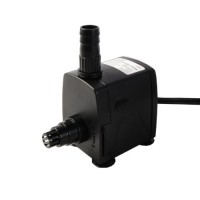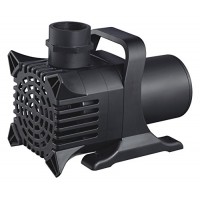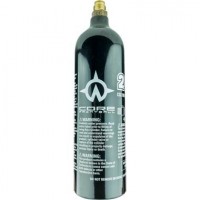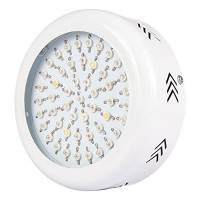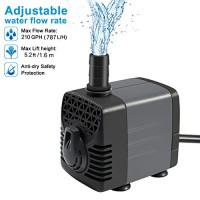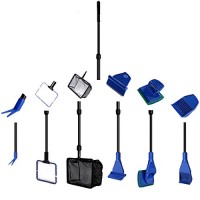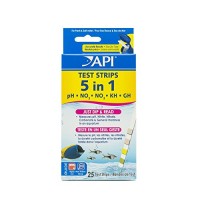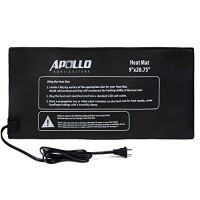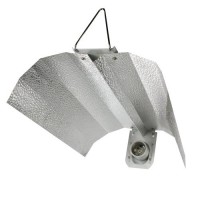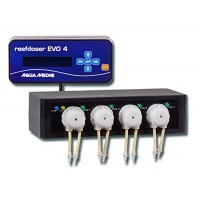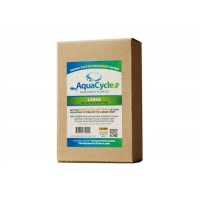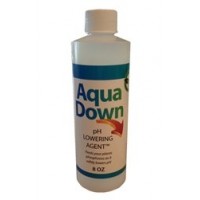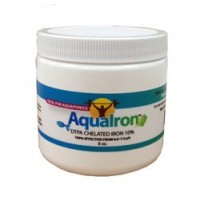Aquaponic Supplies
Aquaponics can be defined defined as a sustainable food production system that combines traditional aquaculture with hydroponics, with effluent from the water being used as nutrition for the plants. Despite the technical sounding nature of the description and etymological origins of quaponics, a rudimentary DIY aquaponics system is very easy to install by someone with basic skills in their own backyard or property. Complete kits are also sold that come with all basic growing tubs, plumbing systems and pumps if you prefer to get your start with a complete turn-key system.
For self sustenance or off the grid living or just as an experiment in natural life cycles aquaponics is a compelling field for the hobbyist or serious forward thinker interested in sustainable farming practices. Latest Books on Aquaponics
Refine Search
ALEKO G2950 Submersible Fountain Stream Pond Waterfall Aquarium Statuary Multi-Function Pump
ALEKO G2950 Multi-Function Waterfall, Fountain and Aquarium Pump. Designed for underwater use, the pump features a 4.5-foot maximum pumping height, 210 gph at one lift, pump discharge diameter 1/2-inc..
Algreen MaxFlo 12000 to 3200 GPH Pond and Waterfall Pump for Gardening
Algreen's maxflo waterfall pumps all have magnetic driven motors for extended life and increased durability. this maxflow/ pumps 3/200 gallons per hour/ is for underwater use and is ideal for an impac..
Aluminum CO2 Paintball Tank
The Pure Energy 20-ounce CO2 tank is ideal for all levels of paintball play. Powered by Pure Energy technology, the tank ensures a consistent recharge rate while you're in the field for maximum shooti..
Amyove 150W 50 LED Plant Grow Light Full Spectrum Creative Supplement Lamp for Indoor Hydroponic Plant Vegetable Cultivation Horticulture Industria...
Description: Item type: LED Plant Grow Light Size: 175mm (diameter) * 60mm (height) Lamplight source type: LED Quantity of LED beads: 50 Power: 150W Luminous flux: 3500lm Input voltage: 85-265V Level..
Ankway Upgraded 210GPH(787L/H, 15W) Submersible Water Pump Humanized Rotation Switch with 2 Nozzles for Pond, Aquarium, Fish Tank Fountain Water Pu...
All products from Ankway can be returned with any reason in 3-MONTH. And We back them with 18-MONTH WORRY-FREE warranty and friendly customer service. Add vitality to your fish tank/aquariums/ponds Ad..
AOCOKCO Aquarium Fish Tank Clean Set, Aquarium Cleaning Kit for Fish Tank Long Handle Fish Tank Brush Functional Six Cleaning Tools for Aquarium Te...
Features: Stretchable handle (1.8ft to 2.6ft length) Material: ABS plastic Color: Black, blue Pack Size: 29 * 20.8 * 3.3cm It can be easily assembled and disassembled with the strap. Remove the dirty ..
API 5-IN-1 TEST STRIPS Aquarium Water Test Strips 25-count
View Larger View Larger Features Just dip & read! Aquariam water testing has never been easier. Measures pH, Nitrite, Nitrate, Carbonate & General Hardness H..
API 5-IN-1 TEST STRIPS Freshwater and Saltwater Aquarium Test Strips 25-Count Box
Keep your fish healthy and thriving by testing your aquarium water regularly with easy-to-use API 5-in-1 TEST STRIPS. API 5-in-1 TEST STRIPS for freshwater and saltwater aquarium help fish owners meas..
API CO2 BOOSTER Freshwater Aquarium Plant Treatment 16-Ounce Bottle
API CO2 BOOSTER Freshwater Aquarium Plant Treatment promotes vibrant, healthy aquarium plants with easy-to-use liquid carbon, which is a necessary element used by aquarium plants for photosynthesis. A..
API FRESHWATER MASTER TEST KIT 800-Test Freshwater Aquarium Water Master Test Kit
Most water problems are invisible to the eye. Quickly measure and modify the six aquarium levels that are most important to the health of your freshwater fish with the API FRESHWATER MASTER TEST KIT. ..
API PH TEST KIT 250-Test Freshwater Aquarium Water pH Test Kit
Keep your fish healthy and thriving by testing your aquarium water's pH regularly with easy-to-use API pH TEST KIT for freshwater aquariums. Testing water parameters weekly helps prevent invisible wat..
API PH TEST KIT 250-Test Freshwater Aquarium Water pH Test Kit
Keep your fish healthy and thriving by testing your aquarium water's pH regularly with easy-to-use API pH TEST KIT for freshwater aquariums. Testing water parameters weekly helps prevent invisible wat..
API POND AQUATIC PLANT MEDIA Potting Soil For Pond Plants 25-Pound Bag
API POND AQUATIC PLANT MEDIA Potting Soil For Pond Plants uses a natural active ingredient for healthy pond plant soil that does not cloud or contaminate water. Contains a unique blend of Arcillite an..
API SALTWATER MASTER TEST KIT 550-Test Saltwater Aquarium Water Test Kit
Protect marine fish and invertebrates from unsafe water conditions with API SALTWATER MASTER TEST KIT. Fish waste, uneaten food, plant refuse and other organic compounds can create harmful levels of a..
API SALTWATER MASTER TEST KIT 550-Test Saltwater Aquarium Water Test Kit
Protect marine fish and invertebrates from unsafe water conditions with API SALTWATER MASTER TEST KIT. Fish waste, uneaten food, plant refuse and other organic compounds can create harmful levels of a..
Apollo Horticulture 9"x20" Seedling Heating Mat for Propagation and Cloning
Would you thrive in an unpleasant environment? Of course not; and plants are no different. All living organisms grow best in an environment that is comfortable and suitable for their optimal growth. A..
Apollo Horticulture GLRGW19 Gull Wing Hydroponic Grow Light Reflector
The goal of Apollo Horticulture is simply to be the BEST VALUE in grow lights. We continually work to produce the highest quality, fully featured, and most up to date hydroponic equipment at the LOWES..
Aqua-Medic Reef Doser Evo 4 Aquarium Water Pump
The Aqua Medic reef doser EVO 4 can independently control the four dosing pumps included in the package. The dispensing of the food or additive can be achieved either manually or automatically; all pu..
AquaCycle Large Aquaponics Fish-less Cycling Kit
Includes nitrifying bacteria for ultra-fast cycling! This kit will eliminate the confusion about cycling that causes so much anxiety at the beginning of an aquaponics system! Includes the following - ..
AquaDown pH Lowering Agent 8 oz
To maximize plant growth, the pH of your aquaponic fish tank water should be 6.8 - 7.0. pH can reach unacceptably high levels when high pH water is added, pH unstable media, such as rock wool and gran..
AquaIron DTPA Iron Chelate - 8 oz
This is one of the few additives that most aquaponics professionals agree needs to be regularly added to most aquaponics systems for the treatment and prevention of yellow leaf (Chlorosis). DTPA is t..
All aquaponics systems are usually grouped into several components or subsystems responsible for the effective removal of solid wastes, for adding bases to neutralize acids, and for maintaining water oxygenation. The complexity of each aquaponic system varies on the size and types of plants and fish grown. Decorative aquaponic systems can be used indoors or small herb growing goldfish tanks can be set-up in kitchens but even if it is a large scale system with hundreds of kilos of fish living in multiple tanks containing thousands of gallons the systems remain fairly uniform in concept.
Typical components include:
1. Growth tank: the tanks for raising and feeding the fish;
2. Settling tank: a unit for catching uneaten food and detached biofilms, and for settling out fine particulates;
3. Biofilter: a place where the nitrification bacteria can grow and convert ammonia into nitrates, which are usable by the plants;
4. Hydroponics subsystem: the portion of the system where plants are grown by absorbing excess nutrients from the water;
5. Sump: the lowest point in the system where the water flows to and from which it is pumped back to the rearing tanks.
Latest Books on Aquaponics

